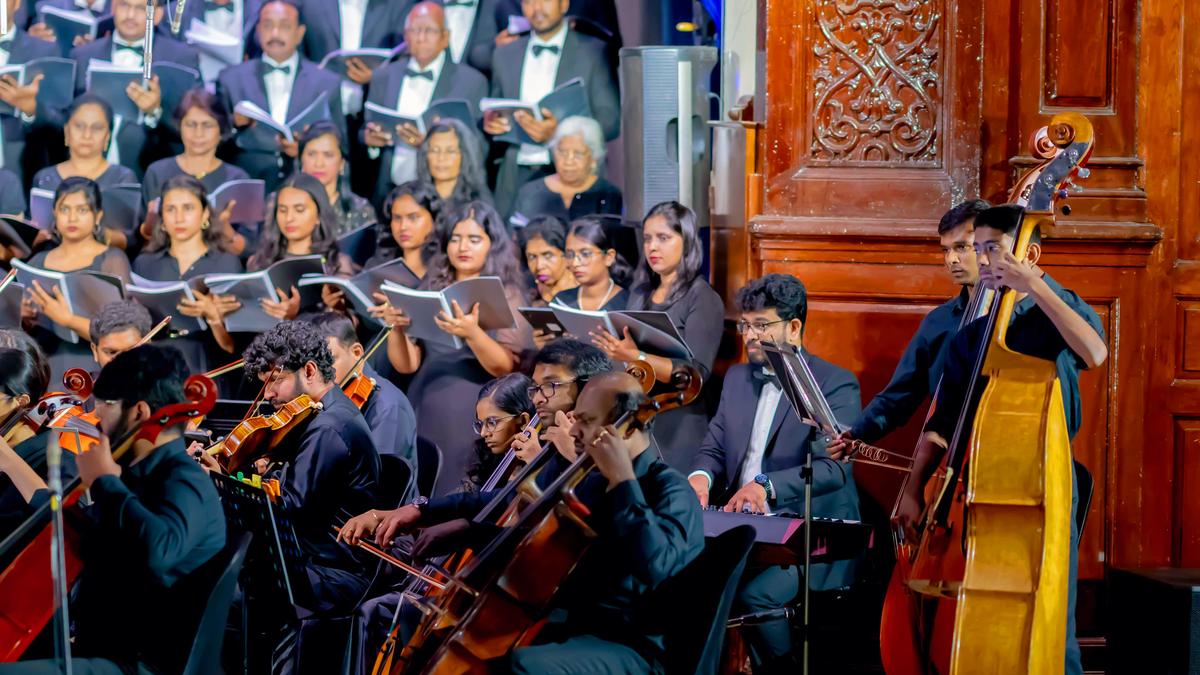
How Chennai’s MMA ensemble interpreted Bach’s Mass in B Minor
The Hindu
The Madras Musical Association staged Johann Sebastian Bach’s Mass in B Minor at Museum Theatre in Chennai
It’s not every evening that the vaulted interiors of the Museum Theatre hold within them the weight of an 18th-century European mass, performed in its entirety by a choir of voices and a young orchestra. This past weekend, the Madras Musical Association staged Johann Sebastian Bach’s Mass in B Minor, not merely as a performance, but as a proposition.
What happens when a work written by a devout Lutheran in Leipzig in the 1740s and never performed in his lifetime as a whole finds its voice nearly 300 years later in a city shaped by altogether different rhythms and rituals? The answer unfolded unhurriedly across the evening as belief in music’s power to bridge distances.
The Mass in B Minor is not designed for easy consumption. There is no narrative, no visual cue, no dramatic arc — only the architecture of the Latin Mass: Kyrie eleison (Lord, have mercy), Credo in unum Deum (I believe in one God), Agnus Dei (Lamb of God), and so on. The phrases were unfamiliar for some, but the MMA offered translations in the programme notes, and, more importantly, gave the music enough room to breathe its meanings into the room.
There was no rush, no attempt to dazzle with speed or scale. Conducted by Augustine Paul — who has led the MMA Choir since 2009 — the concert was attentive to the contours of the score, to the shifts between choral massiveness and solo intimacy, and to the acoustic possibilities of the hall itself. The Museum Theatre, with its stone walls and gently worn stage, held the sound carefully, letting the music rise and settle, rather than reverberate.
The MMA Choir, now in its 132nd year, includes singers from across ages and professions, some formally trained, many not. The orchestra — largely composed of musicians under 25 — approached the score with the kind of directness that comes from being unburdened by performance history. Their focus was just on connection: to the music, to one another, and to the audience. Bach’s writing, which demands clarity of line and structure over flamboyance, benefitted from this unpretentious approach.
The Mass is an edifice. It was never intended for a single liturgical occasion — it’s more a summation of Bach’s sacred music than a service-ready work.
One of the most striking examples of this structure is in the Credo itself. At its heart lies a mirrored triptych: the Et incarnatus est (And was made flesh), followed by the Crucifixus (He was crucified), and then the Et resurrexit (And He rose again). The Crucifixus — sung in low, measured phrases, was particularly affecting, its descending lines seeming to fall through the space rather than move across it. The Et resurrexit followed with a gentle expansion, as if the light were returning one windowpane at a time.





















 Run 3 Space | Play Space Running Game
Run 3 Space | Play Space Running Game Traffic Jam 3D | Online Racing Game
Traffic Jam 3D | Online Racing Game Duck Hunt | Play Old Classic Game
Duck Hunt | Play Old Classic Game











